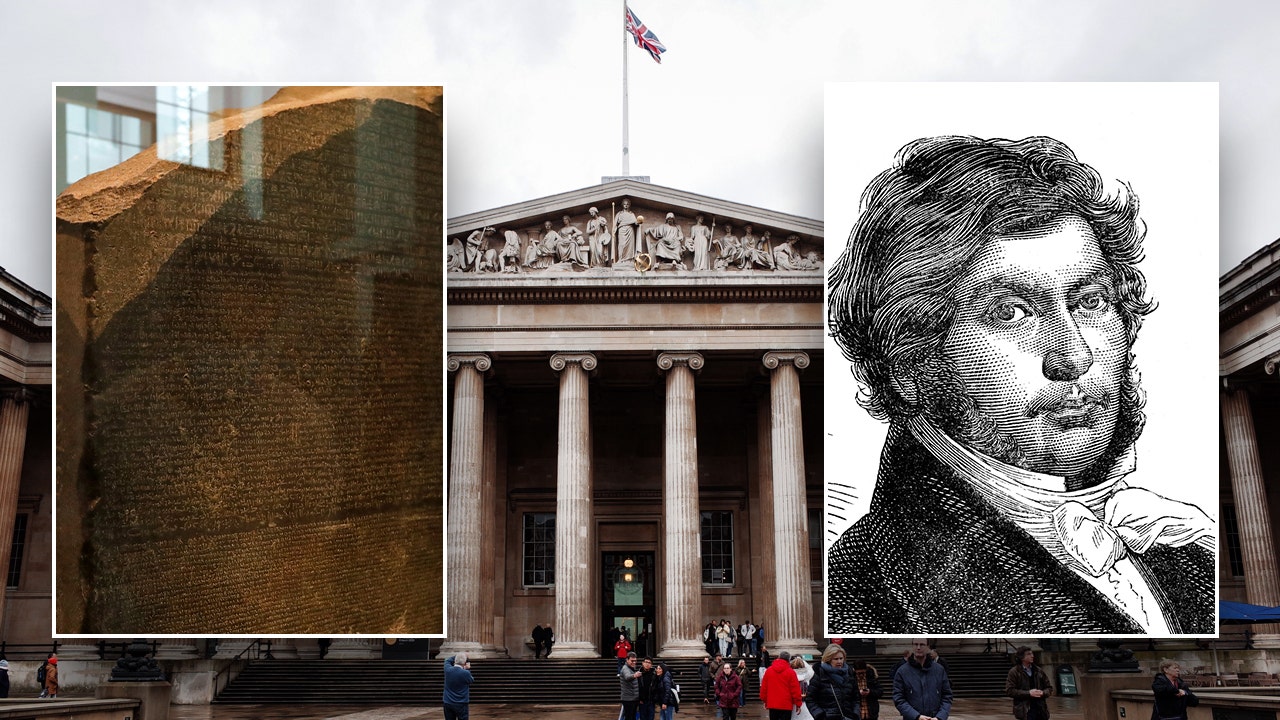The Rosetta Stone, discovered in 1799, was not utilized to decode hieroglyphs for several years.
Napoleon's soldiers discovered the Rosetta Stone in 1799.

The Rosetta Stone was crucial in deciphering the hieroglyphic writing system, which had been lost for centuries.
It took many years to decipher the stone after it was first discovered.
The British Museum in London, England, has possessed the artifact since 1802, with a brief relocation during World War I for safekeeping.

Napoleon Bonaparte's soldiers discovered the Rosetta Stone in 1799 while campaigning in Egypt, according to The British Museum.
An ancient wall near the town of Rashid (Rosetta) contained a stone.
According to History.com, the ancient stone was put into British possession in 1801 after the British defeated the French.

The Rosetta Stone has remained in British possession ever since.
The Rosetta Stone is a fragment of a larger stone slab, standing at 44 inches tall and 30 inches wide, as per History.com.
The Rosetta Stone bears the same text in three distinct scripts: Demotic, hieroglyphic, and Greek.
Scholars deciphered Egyptian hieroglyphs with the help of the stone, which played a vital role.

The ancient writing system was abandoned after the 4th century A.D. and was forgotten for many years until it was deciphered from an inscription on an ancient artifact.
The Rosetta Stone's message was decoded by a group of scholars working together over an extended period.
An English physicist named Thomas Young was the first to make significant advancements in deciphering the Rosetta Stone.
In 1814, Young deduced that the hieroglyphs within ovals, known as cartouches, represented royal names, as per History.com.
In 1822, French scholar Jean-François Champollion declared that he had successfully decoded the message, basing his work on Young's previous efforts.

The British Museum reports that a decree inscribed on a stone pertains to Ptolemy V Epiphanes, who was the ruler of the Ptolemaic dynasty in Ancient Egypt. The decree, issued by a council of priests, affirmed that "the priests of a temple in Memphis backed the king."
According to Britannica, the stone's decree dates back to 196 B.C. and outlines his achievements, such as reducing taxes and bringing peace to Egypt.
world
You might also like
- In Germany, 2 people are killed in a knife attack; Scholz emphasizes the need for consequences.
- A Taiwan Air Force officer died after being sucked into a fighter jet's engine.
- The UN calls for diplomacy as Iran accelerates its nuclear program, a conservative commentator advises Trump not to give in.
- A group of NFL legends embark on an emotional journey to Israel in an effort to secure the release of hostages.
- Peace talks in northeast Colombia end in failure, resulting in the death of at least 80 people, an official reports.



















